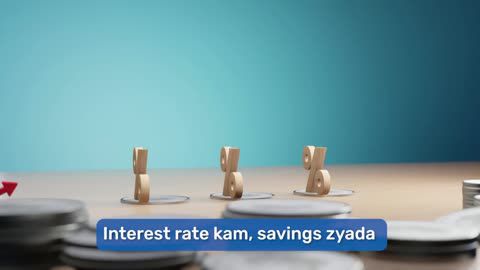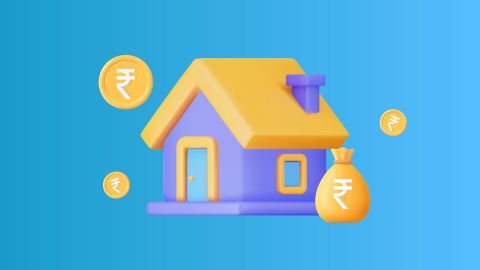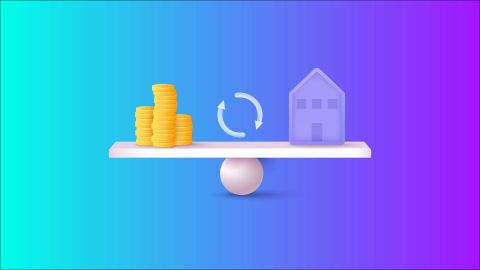House Rent Allowance (HRA) is a salary component provided by many employers to help salaried individuals meet rental expenses. Section 10(13A) of the Income Tax Act, 1961, allows for full or partial exemption on HRA, depending on specific criteria. This exemption is designed to reduce the tax burden of those who pay rent while living in a rented home. However, the exemption is not automatic and depends on various conditions such as salary structure, rent paid, and city of residence. Proper documentation is essential to avail of this benefit without any hassles during tax assessment.
What is Section 10(13A) of the Income Tax Act?
Section 10(13A) of the Income Tax Act provides for the exemption of House Rent Allowance (HRA) from income tax under certain conditions. HRA is a component of the salary package provided by employers to employees to meet their rental housing expenses.
Eligibility for HRA exemption under Section 10(13A) of Income Tax Act
To be eligible for HRA exemption under Section 10(13A) of the Income Tax Act, the following conditions must be satisfied:
The person must be a salaried employee receiving HRA as part of their salary.
The individual must be living in a rented property and paying rent for the same.
Rent receipts or a valid rental agreement must be maintained as proof.
The rented accommodation should not be owned by the individual, spouse, or minor child.
HRA should be specifically mentioned in the salary structure (i.e., the CTC break-up).
Who can claim HRA tax benefits?
The benefits of HRA exemption are generally aimed at salaried individuals who receive HRA from their employer. Section 10(13A) of the Income Tax Act applies to those who get HRA as part of their salary. However, for those who do not receive HRA but still pay rent, there is an alternative – Section 80GG, which provides a separate deduction. Self-employed individuals, or those not receiving HRA, cannot claim this exemption under Section 10(13A). It’s important to check your payslip to ensure that HRA is part of your salary before trying to claim the exemption.
While HRA exemptions help reduce tax burden on rental expenses, many individuals also explore homeownership as a long-term financial strategy. If you're considering purchasing your own home instead of paying rent, Bajaj Bajaj Finserv offers competitive home loans with interest rates starting from 7.45%* p.a Check your eligibility for a home loan from Bajaj Finserv today. You may already be eligible, find out by entering your mobile number and OTP.
Conditions for claiming HRA exemption u/s 10(13A)
To successfully claim HRA exemption under Section 10(13A), certain requirements must be fulfilled:
You must be a salaried individual receiving HRA as part of your salary.
You should actually reside in rented accommodation and be paying rent.
Rent receipts or a valid rent agreement must be submitted as evidence.
Your salary must clearly show HRA as a component in the CTC structure.
The city you live in (metro or non-metro) will affect the percentage of salary eligible for exemption.
The amount exempt is the least of the following: actual HRA received, rent paid minus 10% of salary, or 40% (or 50% in metro cities) of salary.
Documents required to claim HRA u/s 10(13A)
To claim HRA exemption, you must maintain certain documents to show your employer or the Income Tax Department if asked. You do not need to upload these while filing your income tax return, but it’s important to keep them handy:
Rent receipts: Signed receipts from your landlord showing rent amount, month, and payment mode.
Rental agreement: A legally valid agreement between tenant and landlord.
Form 12BB: This form is submitted to the employer to declare HRA and other claims.
Proof of rent payment: Bank statements showing rent transfers to the landlord.
Salary slip: Ensure it includes the HRA component.
Landlord’s PAN: If the annual rent paid exceeds Rs.1 lakh, the landlord’s PAN must be submitted.
If the landlord does not have a PAN, a signed declaration stating this must be provided, as required by CBDT Circular No. 8/2013 dated 10 October 2013.
Keeping all these documents in order ensures smooth processing of HRA exemptions and helps avoid any issues with tax scrutiny.
Key features of Section 10(13A)
1. Conditions for exemption: To claim HRA exemption under Section 10(13A), the taxpayer must fulfil certain conditions:
The taxpayer must be a salaried individual receiving HRA from their employer.
The taxpayer must incur expenses towards rent for a residential accommodation occupied by them.
The HRA received by the taxpayer should be utilised for paying rent for the accommodation.
2 Exemption calculation: The amount of HRA exempt from tax is calculated as the least of the following three amounts:
- Actual HRA received from the employer.
- Rent paid minus 10% of salary.50% of salary.
- if residing in metro cities (40% for non-metro cities).
3. Submission of rent receipts: Taxpayers are required to submit rent receipts or other documentary evidence of rent payments to claim HRA exemption while filing their Income Tax Returns.
4. Impact of not claiming HRA: If a taxpayer does not receive HRA or fails to claim the exemption under Section 10(13A), they may miss potential tax savings.
HRA exemption limits
House Rent Allowance (HRA) is a common component of the salary package, provided by employers to help employees meet rental expenses. Section 10(13A) of the Income Tax Act, read with Rule 2A, allows salaried individuals to claim exemption on HRA. However, this exemption is not given automatically on the entire HRA received—it is restricted to the lowest amount out of three possible values.
The calculation differs slightly depending on whether the employee resides in a metro city or a non-metro city. For income tax purposes, the following cities are considered as metro cities: Delhi, Kolkata, Mumbai, and Chennai. All other cities fall under the non-metro category.
When calculating the exemption, "salary" means the sum of Basic Salary, Dearness Allowance (DA) forming part of retirement benefits, and Commission (if it is a percentage of turnover). Other allowances and benefits are not considered for this calculation.
The exemption is determined based on the least of the following three amounts:
Particulars |
Metro cities (Delhi, Kolkata, Mumbai, Chennai) |
Non-metro cities (Other cities) |
Actual HRA Received |
Actual HRA Received |
Actual HRA Received |
Percentage of Salary |
50% of Salary |
40% of Salary |
Rent paid minus 10% of Salary |
Rent paid minus 10% of Salary |
Rent paid minus 10% of Salary |
This means that while an employee might be receiving a higher HRA, only the lowest of these calculated figures is exempt from tax. The balance HRA amount is fully taxable as part of the salary.
It is also important to note that this exemption is available only if the employee opts for the Old Tax Regime. Under the New Tax Regime, deductions and exemptions such as HRA are not allowed, meaning the entire HRA becomes taxable.
Thus, understanding HRA exemption limits is essential for effective tax planning. Employees should maintain proper records of rent agreements, rent receipts, and salary details to ensure accurate computation and smooth claim of exemption during income tax filing.
HRA exemption example
To better understand the working of HRA exemption, let us take the case of Mr. Agarwal, who is employed in New Delhi, a metro city.
Monthly rent paid: Rs. 10,000
Annual rent paid: Rs. 1,20,000
Basic salary: Rs. 25,000 per month
Dearness allowance (forming part of salary): Rs. 2,000 per month
Total basic + DA: Rs. 27,000 per month = Rs. 3,24,000 annually
HRA received during the year: Rs. 1,00,000
Now, we calculate the HRA exemption:
Particulars |
Amount |
Actual HRA Received |
Rs. 1,00,000 |
50% of Salary (Basic + DA, as Mr. Anwar stays in New Delhi) |
50% of Rs. 3,24,000 = Rs. 1,62,000 |
Rent Paid – 10% of Salary |
Rs. 1,20,000 – Rs. 32,400 = Rs. 87,600 |
Here, the lowest amount is Rs. 87,600. Therefore, Mr. Agarwal can claim this amount as exempt from income tax. The balance Rs. 12,400 (Rs. 1,00,000 – Rs. 87,600) will be taxable as part of his salary.
If Mr. Agarwal had chosen the New Tax Regime, he would not have been eligible for this exemption, and the entire HRA of Rs. 1,00,000 would be taxable.
This example shows that while rent paid might seem to justify the entire HRA, the exemption is strictly limited to the lowest of the three figures. Employees should keep this in mind while planning their taxes.
Popular calculators for your financial calculations
Other topics you might find interesting |
|||






